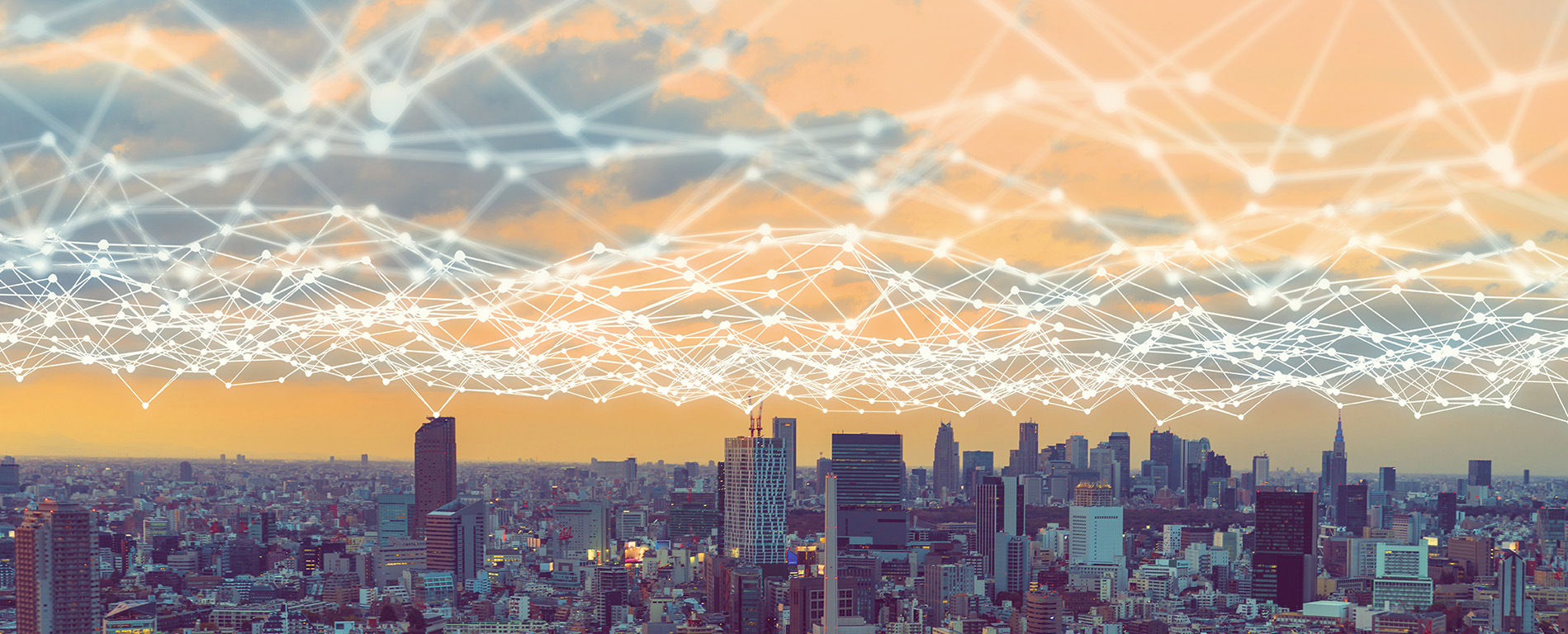Blogs
IoT is the future. What you need to know before implementing it.

In 2009, we connected 900 million IoT devices. Within 7 years, that number will have grown to 25 billion.
When you think about the Internet of Things (IoT), what comes to mind? If I had to guess, I’d say images of devices such as smartphones, Amazon Echo (with Alexa), Google Home, Nest thermostats, Philips Hue lighting, smart refrigerators, bluetooth trackers, weather-centric sprinkler control, and wearables such as FitBits or smart watches.
In essence, the IoT is a network of physical objects. Each object has a sensor capable of transmitting and/or receiving information via the Internet and without human intervention.
IoT devices have already redefined our daily routines. Household appliances can alert us to food spoilage or recalls, remind us to add eggs or cilantro to a shopping list. Cars can select the best route to avoid traffic and automatically schedule their own maintenance.
The exponential growth of IoT dominated much of Gartner’s IT Expo. Through 2021, IoT spending will reach $7.4 million every minute. That translates to 2.8 million new IoT devices sold every hour. We buy 15 million wearables every year and 300 smartphones every day.
Yet we shouldn’t let the speed of IoT adoption override our critical thinking. Incredibly, the IoT market is still in its formative stages. Now is the right time for each of us to gauge IoT’s impact on our organizations.

Advantages
Applications of IoT are limited only by the number of objects in existence. Although IoT benefits are similarly infinite, I would point to five as particularly important:
- Communication. As more and more devices are connected, the plethora of data available makes it possible to track the health of patients, to see real-time location of goods during transport, to monitor the status of HVAC in an office building, etc
- Automation. Using business rules based upon warnings or status messages, these devices can be programmed to automatically control temperature and access/security, to adjust routes, to perform or schedule routine maintenance, to set flags to half staff, etc. Humans can also order changes in real-time using apps on phones, tablets, or computers.
- Customer experience. As humans (whether consumers, constituents, or stakeholders) engage more deeply with technology, they feel like a greater part of the ecosystem. The more informed and involved they feel, the more engaged they become. IoT will redefine the way companies interact with their customers. Wearables in the healthcare industry have self-evident advantages. But wearables can also enhance companies like Disney, which has incorporated IoT wristbands for guests to access parks and rooms, pay for meals and activities, and keep up with family members via location-based services.
- Revenue generation. Not only will manufacturers benefit from widespread adoption of IoT devices, but service-centric business and organizations can reap the rewards of improved efficiencies and inter-connectedness to yield higher revenue and/or profitability. We can expect the varieties of IoT adoption to match strategic business priorities. According to a Gartner survey, business leaders identify the following priorities as truly strategic: business agility (63%), innovation in business processes and systems (60%), top line revenue growth (55%), and margin growth (48%).
- Cost savings. IoT-adopting organizations can lower both response times and required human labor. Predictive maintenance can avoid costly outages while better resource management will further reduce consumption of costly utilities.
Note: Other benefits include improved business processes, increased speed of delivery, heightened, supply chain efficiency, data-driven product development, and real-time service management, among others.

Nonetheless, IoT poses nearly as many challenges as advantages. Consider the following:
- Data overload. In today’s economy, speed is non-negotiable. Organizations must gather, distribute, and assess data quickly to make informed business decisions and deliver enhanced experiences to customers. However, the value of data has a half-life measured in seconds. Data must be used at the moment of collection, and streaming data requires continuous intelligence. It is estimated that 90% of the data in the world today has been created within the last two years. And, this is only expected to grow exponentially as IoT devices generate upwards of 200 zettabytes of data in 2025 (up from approximately 40 zettabytes per year in 2018/2019).
- Timing. New technologies have significant impact on businesses because, though we think linearly, technology changes unevenly. As a result, we usually overestimate the effect in the short run and underestimate the effect in the long run. This will, undoubtedly, be true of IoT.
- Standardization. Multiple standards exist for IoT at the network, device, and security levels. This creates challenges around compatibility of devices and sensors. Will device A be able to communicate effectively with device B?
- Privacy. With recent overhauls of data protection law like GDPR and the California Consumer Privacy Act, organizations must tread carefully when it comes to handling personal data. As IoT matures, consumers will need stronger guarantees that smart objects can preserve privacy as well as augment convenience.
- Security. IoT enables edge computing. The “edge” is the farthest point from the enterprise datacenter or cloud where processing, computing, and storage occurs. Edge computing pushes applications, data, and services away from centralized nodes to the logical extreme of a network. In many cases, this means that data collection and analytics occurs at the endpoint, adding additional complexity around authentication, access control, cyberattacks, and physical security. How much will these security factors affect pricing for IoT devices? (For more on IoT security, see our prior blogs on IoT risks and remedies).
- Accuracy. Complex systems are more likely to experience errors. What happens when users rely on technology that may act and advise from faulty information? The implications for biometrics and healthcare are troubling.

By 2020 there will be 10 connected devices for every human on the planet.
Whether we like it or not, whether we want it or not, IoT is not going away. We can expect it to continue growing in sophistication, power, and users.
IoT products will fundamentally redefine markets and customer experiences. Even with its challenges, IoT technology enables so many benefits that any organization failing to implement will stand at a major competitive disadvantage.
We must use caution and wisdom when implementing IoT. But if we want to prosper, we must implement.
We’re a part of this technological revolution. Our imperative is to position our organizations for maximum benefit and minimum risk.


